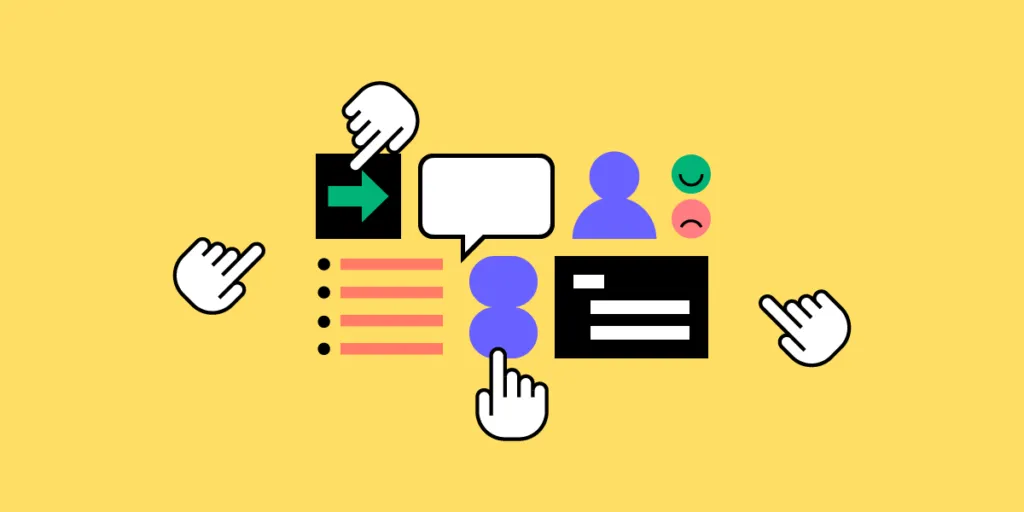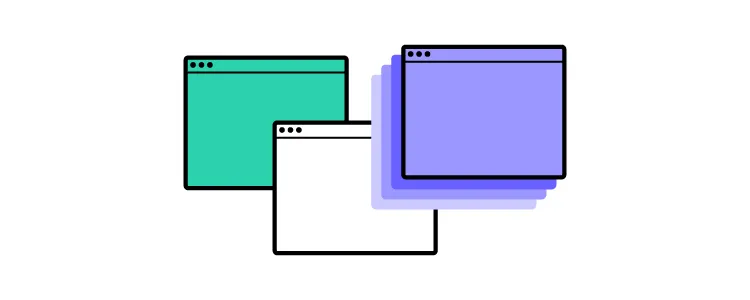Design Planning 101 – A Step-by-Step Guide

Design planning promotes consistency, scalability, and efficiency throughout the design process, resulting in a higher-quality end product and a more satisfying user experience.
Increase your end product’s quality and deliver better user experiences with interactive prototypes from UXPin. Visit our Merge page for more details and how to request access.
Table of Contents
- What is Design Planning?
- Why is Design Planning Important?
- Who is Responsible for Design Planning?
- Aligning Design Efforts for Business Success
- Step 1: Understanding the Problem
- Step 2: Establishing Design Principles and Guidelines
- Step 3: Creating Information Architecture
- Step 4: Defining Interaction Design
- Step 5: Visual Design and Branding
- Step 6: Collaboration and Communication
- Step 7: Project Management and Timeline
- Deliver Better Product Outcomes With UXPin Merge
What is Design Planning?
Design planning is a strategic project planning process of outlining and organizing the design approach for a digital product. It sets the foundation for effective collaboration, efficient execution, and successful outcomes in the product development journey.
Design planning involves, but is not limited to:
- Setting clear objectives
- Defining design principles and guidelines
- Establishing information architecture
- Determining the overall visual and interaction design direction
Why is Design Planning Important?
Design planning is crucial in digital product development as it provides a roadmap for the design team. It ensures that design decisions align with user needs, business goals, and brand identity.
Effective design planning helps streamline the product design process by conducting thorough research, defining clear goals, and establishing guidelines to reduce ambiguity and minimize rework. It enables effective communication among team members, facilitates stakeholder alignment, and increases the chances of creating a user-centered, visually appealing, and functional digital product.
Who is Responsible for Design Planning?
Someone from the design team is typically responsible for creating the design plan. The individual varies depending on the organization and org structure. Some common examples include:
While the design team is responsible for creating and executing the design plan, it’s a collaborative effort involving multiple teams and stakeholders to align user needs with business goals and objectives.
Aligning Design Efforts for Business Success

In a recent webinar hosted by UXPin titled Strategies for Building a Resilient DesignOps Practice, experts Salomé Mortazavi, Meredith Black, and Adam Fry-Pierce discussed the importance of aligning design efforts with business strategies. The panelists shared insights on the challenges design teams face and how DesignOps can address these challenges.
Key challenges in aligning design efforts
Salomé Mortazavi, Senior Director of DesignOps and Design Systems at SiriusXM, highlighted that a common root cause of challenges faced by design teams is the lack of alignment and understanding of Design’s role within the overall business strategy. Salomé emphasizes the importance of creating a shared vision and aligning the design and business charter.
Addressing bottlenecks and inefficiencies
Meredith Black, a DesignOps consultant, added that design teams often face bottlenecks and inefficiencies due to fragmented processes, communication gaps, and resource constraints.
Meredith stresses that DesignOps can streamline workflows, create design systems, and foster collaboration across teams, which helps in moving forward with deliverables.
Planning and vision setting
The panelists also discussed the significance of planning and vision-setting in aligning design efforts. Salomé shared that her go-to tool for planning is aligning roadmaps around a maturity model she calls the Design Maturity Index. This strategy involves continuous planning throughout the year to ensure design efforts align with business objectives.
The following high-level design planning framework provides a step-by-step process to create a comprehensive plan for digital product development.
Step 1: Understanding the Problem

The first step is understanding the problem and target audience. Design frameworks like design thinking, double diamond, Agile UX, and others help designers research and plan projects with a user-centered mindset. To understand the problem, design teams will:
- Conducting user research: gather insights about the target users through interviews, surveys, and usability testing to understand their behaviors, preferences, and pain points.
- Defining project goals and objectives: provide direction for the design planning process by outlining what the final product aims to achieve and the problem it intends to solve.
- Analyzing user needs and pain points: crucial for designing a product that effectively addresses their problems by analyzing research findings to identify patterns, trends, and user requirements.
- Identifying business requirements and constraints: aligning the plan with organizational budget limitations, technical feasibility, and timeline considerations ensures a viable and successful product outcome.
Step 2: Establishing Design Principles and Guidelines

Design systems are valuable in design planning as they provide a comprehensive framework for establishing design principles and guidelines. A design system will simplify or mitigate having to set principles and guidelines for every project.
Defining design principles
Design principles serve as guiding statements that inform the overall approach to design. They outline the fundamental values and goals teams must include in the product’s design. Defining design principles helps maintain consistency, coherence, and a user-centric focus throughout the design process.
Setting usability guidelines
Usability guidelines establish standards and best practices that ensure the product is easy to use and provides a positive user experience. These guidelines cover navigation, layout, content organization, and interaction design. Setting usability guidelines helps create a consistent and intuitive user interface that meets user expectations and needs.
Incorporating brand guidelines and visual identity
Brand guidelines and visual identity elements define the visual representation of the product and ensure consistency with the organization’s brand, including typography, color palette, logo usage, and imagery style. Incorporating brand guidelines and visual identity elements into the design planning process helps maintain a cohesive and recognizable brand presence across the product.
Step 3: Creating Information Architecture

Designers can establish a solid information architecture that ensures a logical and intuitive user experience, making it easier for users to find and navigate through the content and features of the digital product.
Conducting content audit and inventory
Begin by reviewing and analyzing the existing content within the app or website by identifying all the relevant information, assessing its relevance and quality, and determining what to keep, revise, and remove.
Organizing information and content structure
Organize the information into a clear and logical structure by grouping related content, creating categories and hierarchies, and establishing a coherent flow of information for users to navigate.
Creating user flows and navigation maps
Mapping user flows allows you to identify the most intuitive and efficient ways for users to achieve their goals. Navigation maps, on the other hand, visually represent the structure of the website or application, showing how different pages or sections are connected.
Designing wireframes and low-fidelity prototypes
Wireframes serve as a blueprint for the final design and focus on the arrangement of content, functionality, and user interactions. Low-fidelity prototypes allow for user testing and feedback before investing significant resources into high-fidelity prototypes.
Step 4: Defining Interaction Design

A product’s interaction design must facilitate smooth and engaging user experiences, enabling users to navigate and interact with the digital product seamlessly.
Mapping user interactions and actions
Map the product’s interactions and actions to understand user goals, define user journeys, and identify touchpoints where users engage with the interface.
Designing intuitive and user-friendly interfaces
Create intuitive, user-friendly interfaces by designing clear navigation, logically organizing content, and ensuring the UI elements are consistent and visually appealing.
Incorporating interactive elements and microinteractions
Interaction design includes designing buttons, menus, forms, and other interactive components that respond to user input. Microinteractions, such as hover effects or animated transitions, can add subtle but meaningful feedback to user actions.
Step 5: Visual Design and Branding
The design plan must guide designers in creating visually appealing and cohesive designs that align with the product’s brand and effectively communicate its purpose and message to the users.
- Choose an appropriate visual style that aligns with the product’s objectives and target audience.
- Defining color palettes and typography to create a visually pleasing and consistent design, including colors that evoke the desired emotions and choosing legible fonts that reflect the brand’s personality.
- Creating visually appealing layouts and components like buttons, cards, or icons, paying attention to spacing, hierarchy, and balance to ensure a harmonious and engaging design.
- Ensuring consistency and coherence in visual design involves defining design patterns, guidelines, and style guides that provide a framework for maintaining consistency across all design elements and screens.
Step 6: Collaboration and Communication

As we discovered from our DesignOps experts above, collaboration and incorporating stakeholder feedback are crucial for design planning. Establishing effective communication channels, collaborating with stakeholders and cross-functional teams, and conducting design reviews and feedback sessions, facilitates knowledge sharing to align the design plan with business goals.
Collaboration and communication considerations for the design plan include:
- Establishing effective communication channels, including project management tools, email, instant messaging platforms, or virtual collaboration spaces, to ensure smooth and timely communication among team members.
- Collaborating with stakeholders and cross-functional teams involves key stakeholders, such as product managers, developers, and marketers, throughout the design process to gather their insights and align the design decisions with the overall product strategy.
- Conducting design reviews and feedback sessions provides an opportunity to present design concepts, prototypes, or wireframes to the relevant teams and gather constructive feedback to iterate and improve the design.
Step 7: Project Management and Timeline

Effective project and timeline management are essential for keeping design initiatives on track, optimizing resource utilization, and ensuring timely delivery of design outputs.
- Creating project schedules and milestones ensures a structured and organized approach to design planning and execution.
- Managing design resources and timelines ensures that design tasks are appropriately scheduled and coordinated within the overall project timeline.
- Tracking progress and adapting to changes to meet project goals and address any unforeseen challenges or changes helps maintain open lines of communication with stakeholders to ensure alignment and make informed decisions.
Deliver Better Product Outcomes With UXPin Merge
UXPin Merge bridges the gap between design and development to simplify design planning and product development. With design and engineering teams in sync, DesignOps can spend more time on strategic initiatives rather than wasting resources on redundant processes–like updating multiple design libraries and documentation.
With a real single source of truth, the design system team syncs updates to every team with one release–no more separate design libraries for designers, developers, prototyping, etc. Teams can access UI components and documentation from one centralized repository, resulting in absolute consistency, zero design drift, and minimal technical debt.
Streamline your design process with a single source of truth from Merge. Visit our Merge page for more details and how to request access.




